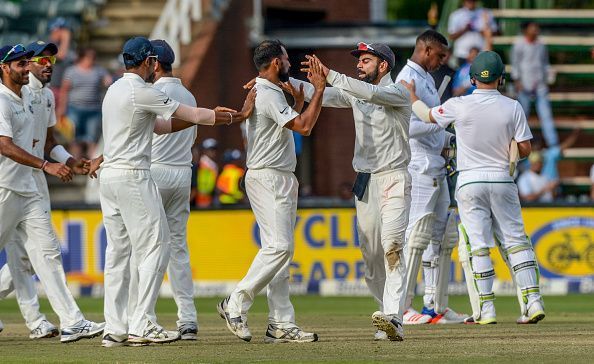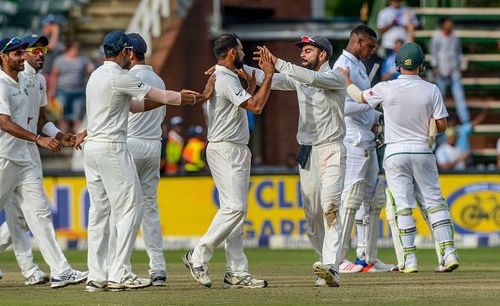
Home advantage rules in Test cricket? Time to bust the myth!
With Australia and India's recent Test wins in South Africa, there is a thought that, maybe, Test cricket doesn't deserve the criticism that might have hurt its standing across formats for quite some time now. It is often said that Test cricket lacks bite and competitiveness due to many teams winning more at home and losing away.
Theories such as the IPL and a jam-packed calendar making international cricket a level playing field could be convenient ones to conceive.
However, simple statistics from the period of January 1, 2014, to March 5, 2018, tell a completely different story.
There have been 33 Test series played during this period, in which the away team has won a minimum of 1 match in the series. India extended that trend in South Africa recently, having won the 3rd Test in Johannesburg after being 0-2 down.

Dissecting it just a little more, the reading of the outcome of those 33 series goes as - Wins 19, Draws 7, Losses 7. The win percentage is above 50 and they feature all Test playing nations barring Bangladesh.
Some of them in this period involved England prevailing in South Africa, the Proteas toppling the Aussies in their own backyard and Sri Lanka ensuring that Pakistan lost their first ever series in their adopted home country of the UAE. These are just 3 examples.
To a huge extent, it proves that most teams are committed or have the ability to do well in the 5-day game, despite the lure of T20 cricket. Competitiveness is still alive. Australia's 4-0 win in the Ashes this summer against England is an exceptional case, and cricket has always had room for exceptions.
Even when home teams have managed to win or draw a series, it hasn't come easy for them. For instance, India had beaten Australia 2-1 last year. Yet, it wasn't without the Aussies going 1-0 up by a whopping 333-run win in Pune and pulling off a draw in the 3rd Test in Ranchi.
In 2016, Misbah ul Haq's Pakistan fought tooth and nail to ensure two dominating, outstanding victories, at Lords and The Oval for a 2-2 series result. It was one of the most memorable Test series played in the last 2 years.
It proves that whether pitches are doctored or not, the contest between the bat and ball is the King. In that light, India's unbeaten run in their backyard is commendable ever since Virat Kohli took over as captain. Arguments such as letting the away team decide to bat or bowl first, don't hold much merit after looking at these statistics.
The belief that the resurgence of T20 cricket is making Tests more result-oriented, could hold true. With greater technological and psychological resources, teams seem to be able to do their homework on the opposition much better than the days when Australia or West Indies before them, would roll over nearly any opponent in any part of the world.
The only flip side to such results is that Test matches could become one-sided or finish earlier than the 5-day mark. While that is a fair argument, an away team winning a game shows that they belong in the contest. And in the larger context of the series, chances are that they did provide themselves and their fans much to cheer about eventually. A series win is an icing on the cake.
The ICC only needs to ensure that teams get to play in all countries, even as pressure from broadcasters is mounting when it comes to financial gains from each series. As long as a steady balance is maintained, one can still be confident about Test cricket not going down the drain that easily and will be continued to be played fair and square.